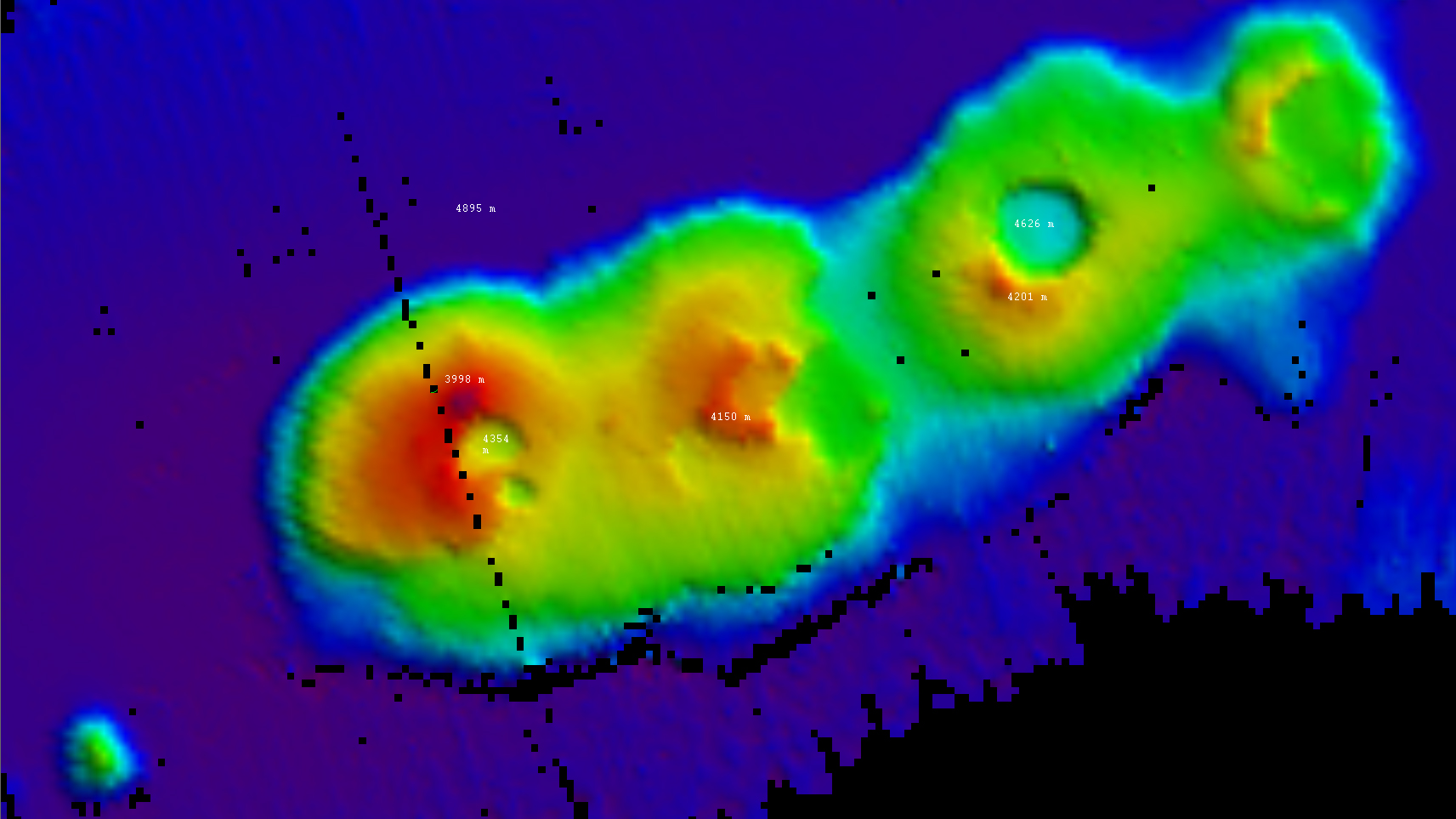Submerged volcano cluster found off the coast of Sydney
Submerged volcano cluster found off the coast of Sydney
Australia's new ocean-going research vessel Investigator has discovered extinct volcanoes about 250 kilometres off the coast of Sydney in 4,900 metres of water.
Professor Richard Arculus, from the Research School of Earth Sciences, an igneous petrologist and a world-leading expert on volcanoes said these particular types of volcanoes are windows into the seafloor.
"They tell us part of the story of how New Zealand and Australia separated around 40 to 80 million years ago and they'll now help scientists target future exploration of the sea floor to unlock the secrets of the Earth's crust," Professor Arculus said.
"They haven't been found before because the sonar on the previous Marine National Facility (MNF) research vessel, Southern Surveyor, could only map the seafloor to 3,000 metres, which left half of Australia's ocean territory out of reach," Professor Arculus said.
"On board the new MNF vessel, Investigator, we have sonar that can map the seafloor to any depth, so all of Australia's vast ocean territory is now within reach and that is enormously exciting," Professor Arculus said.
The chief scientist for the voyage, UNSW marine biologist Professor Iain Suthers said the volcanoes were discovered during a search for nursery grounds for larval lobsters. At the same time the ship was also routinely mapping the seafloor.
"The voyage was enormously successful, not only did we discover a cluster of volcanoes on Sydney's doorstep, we were amazed to find that an eddy off Sydney was a hotspot for lobster larvae at a time of the year when we were not expecting them," Professor Suthers said.
The four extinct volcanoes in the cluster are calderas, which form after a volcano erupts and the land around them collapses, forming a crater. The largest is 1.5 km across the rim and it rises 700 metres from the sea floor. The cluster is likely to be 50 million years old.
Professor Suthers said the 94 metre Investigator has capabilities that marine scientists in Australia have never had before and it will unlock the secrets of the oceans around our continent and beyond.
"Investigator is able to send and receive data while we're at sea, which meant the team back on base at UNSW in Sydney could analyse the information we were collecting at sea and send back their analysis, along with satellite imagery, so we could chase the eddies as they formed," Professor Suthers said.
"This is the first time we've been able to respond directly to the changing dynamics of the ocean. For a biological oceanographer like me, it doesn't get more thrilling," Professor Suthers said.
"It was astounding to find juvenile commercial fish species like bream and tailor 150 kilometres offshore, as we had thought once they were swept out to sea that was end of them, but in fact these eddies are nursery grounds along the east coast of Australia."
The voyage departed Brisbane on 3 June and concluded on 18 June in Sydney, and involved 28 scientists from UNSW, Latrobe University, the University of British Columbia, the University of Sydney, the University of Auckland, the University of Technology Sydney and Southern Cross University.
The centre of the volcanic cluster is 33 31 S, 153 52 E, which is 248 km from Sydney Heads. The cluster is 20 kilometres long and six kilometres wide. The highest point in the cluster is at 3998 metres deep and the seafloor is at 4890 metres.
Marine National Facility background
RV Investigator is a 94 metre purpose-built research vessel, capable of travelling 10,000 kilometres in a single voyage, accommodating up to 40 scientists and support staff, from the equator to the Antarctic ice-edge. The $120 million ship was commissioned in December 2014 by the Minister for Industry and Science, Ian Macfarlane, and supports atmospheric, oceanographic, biological and geoscience research.
The Marine National Facility is a blue-water research capability, funded by the Australian Government and managed by CSIRO on behalf of the nation. It is available to all Australian scientists and their international collaborators, with access granted on the basis of proposals that are internationally peer reviewed and independently assessed for science quality and contribution to the national interest.

